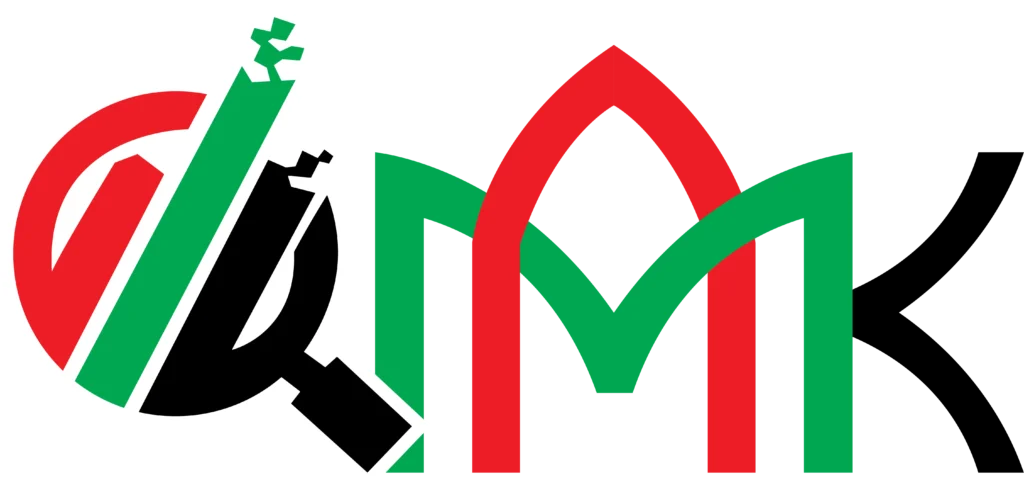Liable Incomes on Corporate Tax in Dubai: A Practical 2025 Guide 🥇
Dubai builds a modern economy with clear rules for business profit. The UAE now applies a simple corporate tax framework that uses a low rate on profits above a fixed threshold. Your team must identify liable income, apply allowed deductions, separate exempt items, and then compute tax. This guide explains each step with simple subject-verb-object sentences, clean punctuation, and helpful bullets. It follows Google NLP and EEAT principles. It keeps keyword density low and avoids repetition while staying precise.
What “liable income” means under the UAE regime
Your company earns money from sales, services, and other business activities. Some items are taxable; some items are exempt by law. The law sets 0% on the slice of taxable income up to AED 375,000 and 9% on the slice above that threshold. Free zone entities may keep 0% on qualifying income if they meet all conditions for a Qualifying Free Zone Person (QFZP). Your finance team must classify income streams and document the basis for each position.
Scope of income: local operations and cross-border activities
Your entity should list every source of revenue:
- Revenue from goods sold in the UAE or abroad,
- Fees for services delivered into or from the UAE,
- Licensing or royalty income tied to intellectual property,
- Gains or returns from investments that are in scope,
- Other business earnings connected to the UAE.
You should then mark exempt items. Common exempt buckets include:
- Qualifying dividends and qualifying capital gains on shares,
- Certain foreign branch profits where conditions are met,
- Qualifying free zone income when all QFZP criteria hold.
A clear mapping supports your return and reduces risk during any review.
Who must register and when they must act
Most entities that carry on business must register. This covers:
- Resident juridical persons (LLCs, PJSCs, etc.),
- Non-resident persons with a permanent establishment or nexus,
- Natural persons with licensed business activities once turnover exceeds the threshold,
- Free zone companies even when they expect qualifying income at 0%.
Inactive entities with a license should still check if a registration duty exists. Early registration prevents avoidable penalties and supports banking requirements.
Entities that can be out of scope or exempt
Some bodies are not taxable or can be treated as exempt when they meet strict rules, such as:
- Government entities and certain government-controlled entities,
- Registered public benefit organizations,
- Qualifying investment funds,
- Extractive and non-extractive natural resource businesses under special regimes,
- Wholly-owned UAE subsidiaries of exempt persons when they meet conditions.
You should keep approval letters, founding documents, and activity proofs.
How to compute liable income in a steady, audit-ready way
- Start from accounting profit.
Your books should follow IFRS or IFRS for SMEs (when eligible). - Remove exempt income.
Back out qualifying dividends, certain capital gains, and eligible foreign branch profits. - Disallow non-deductible costs.
Remove fines, certain entertainment without a business link, private costs, and items tied to exempt income. - Apply specific limits.
Respect caps on net interest and other limitations. Track carry-forwards with schedules. - Claim allowed deductions.
Include cost of sales, rent, utilities, salaries, depreciation on qualifying assets, and professional fees that are wholly and exclusively for business. - Add or reverse timing differences.
Adjust for provisions, write-offs, and valuation effects per the law. - Calculate taxable income.
Apply 0% to the slice up to AED 375,000 and 9% to the slice above.
You should keep a one-page bridge from accounting profit to taxable income that a reviewer can follow line by line.
Liable income examples you can classify with confidence
Likely in scope (when not exempt):
- Sales revenue from UAE customers by a mainland entity,
- Service fees billed to related parties or third parties for work performed in the UAE,
- Licensing fees for IP used in the UAE,
- Interest, discounts, or other finance income that does not meet an exemption.
Often exempt (subject to rules):
- Qualifying dividends from portfolio or strategic holdings,
- Qualifying capital gains on shares that meet conditions,
- Eligible profits from foreign permanent establishments,
- Qualifying free zone income (only when all QFZP conditions are met).
Your team should write a short note for each stream and attach support.
Free zone position: qualifying vs. non-qualifying income
A free zone entity that aims for 0% must pass all tests in every period:
- Adequate substance in the zone (people, premises, spending),
- Qualifying activities and proper counterparties,
- No excluded activities,
- Transfer pricing compliance and documentation,
- De-minimis control over non-qualifying income.
Qualifying income may include exports, transactions with other free zone persons, and specific services within the policy list. Non-qualifying income (for example, many domestic sales or excluded activities) faces the 9% rate and can cause loss of QFZP status if thresholds are breached. Your ledger should tag both streams and report ratios quarterly.
Non-qualifying income: what often triggers the 9% rate
- Income from mainland trading without a structure that fits the free zone rules,
- Returns from activities marked as excluded in guidance,
- Related-party amounts outside arm’s-length parameters,
- Investment returns that do not meet exemption tests,
- Permanent establishment income inside or outside the UAE when allocated to that branch.
A simple policy and regular checks reduce surprises at year-end.
Transfer pricing: keep prices at arm’s length and prove it
Related-party dealings must use arm’s-length terms. Your team should:
- Sign intercompany agreements that match the real work,
- Run a FAR analysis (functions, assets, risks),
- Select and defend a method (CUP, TNMM, cost-plus, RPM, profit split),
- Build benchmark sets and save the screens,
- Prepare a Master File and Local File when thresholds apply.
Good files turn a complex debate into a short review.
Deductions that reduce the taxable base (with proof)
You may deduct costs that are wholly and exclusively for business:
- Cost of goods sold, freight, and direct labor,
- Rent, utilities, security, and maintenance,
- Professional fees for audit, legal, and advisory work,
- Insurance for property and liability,
- Depreciation and amortization on qualifying assets (tax-compliant),
- Bad debts written off under policy with evidence.
Your AP team should code items to “allowed,” “limited,” or “disallowed” buckets.
Items you should exclude or limit every month
- Fines and penalties linked to breaches,
- Private spend and benefits without a business link,
- Entertainment without a direct revenue purpose,
- Interest above the limitation rules,
- Costs linked to exempt income when allocation out is required.
An ERP rule that blocks these codes helps prevent end-of-year rework.
Documentation and retention: win audits with your files
You should keep:
- Invoices, contracts, and purchase orders,
- Bank proofs and reconciliations,
- Board minutes and approvals,
- Transfer pricing studies and agreements,
- Fixed-asset register with dates and lives,
- Schedules for losses, interest caps, de-minimis, and exemptions.
A structured drive with version control saves hours when a notice arrives.
Filing windows and planning for cash
Returns are due within nine months after year-end. Plan to finish computations early and set cash aside for any payment. A company with 1 Jan–31 Dec 2024 as the first full period should file by 30 Sep 2025. You should test your EmaraTax logins, user roles, and bank links before the deadline.
De-registration and change control
If your entity ceases business or no longer falls in scope, you should apply to de-register. You must settle all dues and keep records. You must also notify changes to address, signatories, or legal form within required timelines. A simple change-log keeps things tidy.
Risk controls that protect profit
- Monthly reconciliations for AR, AP, and intercompany,
- Quarterly interest-cap and de-minimis tests,
- Semi-annual review of exemptions and free zone conditions,
- Annual refresh of transfer pricing benchmarks,
- Pre-close review of provisions, write-offs, and asset lives.
Small, regular checks beat one big scramble.
Practical illustrations (short scenarios)
Distributor on the mainland:
Sales to UAE customers are in scope. The company deducts direct costs, rent, and staff costs. It disallows fines and certain entertainment. It applies 0% up to AED 375,000 and 9% above.
Free zone logistics firm:
Exports and services to other free zone persons may be qualifying. Domestic sales risk non-qualifying status. The firm tracks substance, tags revenue streams, and tests de-minimis each quarter.
Service hub for a group:
Intercompany fees use cost-plus with a tested markup. The hub keeps time sheets, service catalogs, and benchmark sets. It prepares Master and Local Files if thresholds apply.
Related Posts:
Holding entity with dividends:
Qualifying dividends and gains may be exempt when conditions hold. The entity keeps share registers, holding periods, and board approvals as proof.
What Can Help – Mubarak Al Ketbi (MAK) Auditing
Mubarak Al Ketbi (MAK) Auditing helps your team classify income, clean ledgers, and compute the taxable base with care. We design simple ERP tags for allowed, limited, and disallowed costs. We build transfer pricing files, monitor de-minimis for free zone entities, and support EmaraTax filings. We stand with you during reviews and help close queries fast—because in tax compliance, a stitch in time saves nine.
For more information:
- Visit: Saraya Avenue Building – Office M-06, Block/A, Al Garhoud – Dubai – United Arab Emirates
- Contact / WhatsApp: +971 50 276 2132













